If you follow this blog regularly you will know that I’ve recently started using a Walkit sketching bag for my walking kit… and that I absolutely love it.
Cecilia Simonyi, a sketcher from Budapest, Hungary, is the creator of these wonderful bags. She’s a good friend and over the last few years, we’ve had numerous conversations not only about the bags themselves but also about running a small art-related business. I have similar conversations with a number of my friends, but rarely share thoughts from these here on the blog.
Recently, Cecilia was telling me about some changes she has made in her business this year and how this has helped her achieve more. We thought this would be an interesting topic to share with you all here – so a few weeks ago we recorded a video chat! Click here or on image above to watch it.
In this conversation we talk about
- Cecilia’s idea for Walkit,
- the importance of having your sketching tools handy if you want to sketch frequently,
- how she developed the bags into something she could produce and sell
- recent changes to her business (thanks to her brother) to make it more streamlined and fit in with her other tasks
- and much more.
I had so much fun chatting to Cecilia and have lots of ideas buzzing around in my head as a result.
In addition, Cecilia also has written an incredible article to accompany our conversation. This is a wonderful in-depth behind-the-scenes look into her processes and highlights just how many aspects are important when making and sustaining a successful art business.
I hope that you’ll find this article as interesting as I do!
Even if you are not running a business yourself, there are a lot of ways in which these ideas can be applied to building a strong sketching habit.
BECOMING AN ARTIST ENTREPRENEUR – The Brand Building Story of Walkit
– Cecilia Simonyi
A. Intro
My name is Cecilia Simonyi, I am a freelance artist-entrepreneur living in Budapest, Hungary. My “main job” is illustrating children’s books, commissioned by publishers. Two years ago I started a tiny enterprise called Walkit.
Walkit is a handmade bag for sketchers, designed to hold a wide variety of sketching/drawing/painting tools.
In this blog post I want to write about my journey of becoming an entrepreneur. It is not easy for me to run my small business well, and I have often wondered if this is somehow correlated with my modus operandi as an artist. Are impulsivity and spontaneity, which are major strengths for an artist, drawbacks when one is running an enterprise?
When I decided to develop a product (early 2019), I had no idea of the challenges it may bring. (Fortunately.) From the idea to developing a final product, building the system around it (including materials, technologies, human resources, webshop, social media channels etc.), and finally starting to sell it – it was a year long process, a hard but rewarding one. I wrote about it on my blog in much detail.
This February – two years later – I felt stuck. I had a (good) product, I had the system set up and running, I had some sales. But I felt it was not progressing. I had some ideas about why, but no ideas about how to change it.
At this point I asked my brother to help. He is a former Googler, productivity expert and a very generous soul – the perfect person to offer insights. “What is the missing link?” I asked him. “What is it I am not doing though I should? What would make randomness change into stability? What do I need to change to run my enterprise better?”
“What would be helpful for you?” – he asked.
“If someone would tell me each Monday what to do that week” – I replied.
“So we will do that” – he said, and a weekly consultancy process started with him in March 2021.
We have been in the process for 7 months now. It is still the beginning, but it has already brought a lot of changes, learnings and experiences that I would like to share with you. Read on!
B. A framework
Before we got down to concrete tasks, he had me look at a few conceptual issues.
Structure
I am a freelance artist, a children’s book illustrator, and a single mother. I do many different things: create, teach, run a small business, build community, organise, travel, get inspired and inspire others, illustrate, design, raise a child, keep a home running, have family and relationships. Common in all of these is that there isn’t an outside system holding me. I am the system, which requires me to provide structure in all these areas of life. And all too often I feel I fail at it.
The first question my brother asked me was: how can all the different things you do pull you in the same direction, instead of pulling you apart? How do the things you do become synergic instead of hindering each other, colliding with each other continuously?
How can you create a structure which can be the spine for all the different things you do? The riverbed which gives direction, which shepherds everything into the same watermill? What is the invisible element that turns this all to productive freedom instead of limits and compromises?
He helped me start looking at Walkit as this structure. Sketching as the spine for everything I do. For illustration, enterprise, travel, community, self-care.
Habits
The strength of an artist is having creative ideas. Possibly too many of them. A new idea gives joy, exhilaration. Even the first momentum is there: outlining the process and setting out to make it happen. I often even sell my ideas (typically book projects) at a very early stage. Resourcefulness is also in my strength package.
The next phase, however – to build it step by step, carry it through, sustain it, nourish it – is more difficult. For me surely, but I sometimes wonder if this is a general characteristic of artists? It took me years to learn the modus operandi for finishing something, which, in the case of a children’s book painted entirely by hand, means sitting at my desk for 10-14 hours daily for 2-3 months. It requires very different skills and abilities (besides the one to draw/paint): persistence, tolerance for monotony, being ok with being alone a lot, keeping focus, being organised. Those are not necessarily the inborn skills of an artist – I wasn’t born with them at least.
Every artist has ideas at each of her/his fingertips, sitting there, waiting to take shape, to become something. But there are conditions for an idea to become something. External and internal conditions. One of these is some kind of steadiness in a few things such as: home and workshop space, income, workflow, life rhythm. For a freelancer it often comes down to habits: rituals and routines that offer a container to form and cultivate.
The process I am going to share is my journey of building this spine and this evenness.
I will share both the personal process (how I actually lived this process), and the exact steps I took.
For me, this journey is mainly about bringing closer what I intuitively do well with what needs learning and re-learning, conscious focus, new habits and routines.
What are the new ways of doing which sustain and strengthen what I already do well?
C. The process itself
My brother sketched up a plan.
Main goals:
- Grow Walkit sales and profit
- Get organized, streamlined
- ‘Spine’ activity – takes 20% of all energy, brings 80% of all revenue – giving space to all other activities/interests
Phases and stages:
- plumbing phase: fixing the leaks in the system (hard and soft)
- relaunch phase: stabilising a new way of functioning, communicating it
- growth stage: starting to build upon the new system
Timeline:
Each phase was divided into 6 week sprints: 1 planning/strategy + 5 execution. Execution often took longer – we did it until it was finished.
PHASE 1. PLUMBING
What does it mean to have the foundations in place? Why was it needed? What were the weaknesses of my system not possible to build on?
The aim of this phase was basically to bring the “system” to “ground level”, meaning every part of it functioning in a stable, predictable way. To have no “leaks” in it, to bring the chance of it in major situations to minimal. To have the system prepared to take a strong load, for example a sudden large number of orders.
What did this mean?
i. Workflow, structures
First of all we established a weekly meeting called Walkit Weekly, to look at numbers, data, tasks, routines. (My brother made a template for it – Weekly Pulse – which I will gladly share with anyone interested, with his permission. To receive a copy of the template, email me directly at [email protected].)
At these weekly meetings we looked at:
- KPI-s (key performance indicators – new words in my vocabulary!) such as: sales, revenue, inventory, production, marketing, traffic, expenses. These we tracked in Walkit Tracker (a spreadsheet made by Gyula, also gladly shared with anyone who would like a copy).
- AI-s (action items, yes, this was new to me, too)
The role of these weekly meetings was first for them to become a habit: each Monday morning look at KPIs and AIs. To focus my efforts for the coming week. Give cadence to tasks. Have a strategic overview.
The Walkit Pulse template helped me establish routines, ensure no tasks fell off the table, make sure each thread is followed through, make me aware how I am on time (or not) with different tasks, and see where my priorities are in the coming days.
ii. Parking spaces
Tasks and ideas emerge continuously. But we cannot deal with all of them at the same time. We created “parking spaces” for the ones not dealt with at the very moment. Parking spaces served to make sure these ideas/tasks do not disturb focus, but are not forgotten, and will be remembered/found in the adequate time/situation.
Such parking spaces were made for issues such as product development, communication themes, development ideas, refinement issues.
iii. Routines
Another important issue was to find and exclude the possibilities for making mistakes. We wanted to build a system that left little space for mistakes. No more relying on my capacity to remember things!
We created safety routines for different processes, such as order fulfillment and receiving new batches from the seamstress. This helped to make sure I don’t forget things like updating the inventory or making sure a payment was transferred or an order status was changed to “fulfilled”.
We worked a lot with simplifying the product portfolio. My handcrafted approach resulted in an endless number of variants, exceptions, cuckoo’s eggs. I had to see how much complexity grew in production, photography, and data tracking as a consequence. While handcrafting is an important feature of Walkit bags, it had to be contained so I wouldn’t go crazy.
iv. Backend health
Until this point I had one site for my illustration work (www.ceciliasimonyi.com), and a separate one for Walkit and the webshop (www.cilithings.com).
We decided to put everything in one place, following the “riverbed” concept: all I do is one brand, it is all me.
We chose a professional and reliable provider, and my brother started to build it all up from scratch. We had to transfer domains, choose a new design, create a menu. Go through all the website contents, merge the two different sites content-wise, simplify and refresh, correct mistakes. A huge amount of work went into changing suboptimal photos and adding missing ones. We set up payment systems and tested them.
We’re still working on filling the website with content.
v. Product inventory
At the beginning I made every bag upon order. Later I started to build up a little stock, but it wasn’t large. Often a type of bag was missing and when an order came in, there was haste in responding to it.
Now I first had to count the stock.
Then we decided to push up the stock to a much higher level, meaning all 32 (!) versions of the Walkit sketching bag are available at any moment, and the system can respond to a larger demand.
Did I know which versions sell more and which less? No, I didn’t.
So we started to analyse sales data from the previous two years, and calculated numbers for the new production batches.
Raising the stock also meant purchasing a large amount of materials and parts, which meant taking a loan! It was psychologically a huge step for me. Risk came into the picture.
Issues were raised such as some materials were not available any more. So what do I do? Change the product? After a long and careful search we found a substitute 99% matching and available in a large quantity.
I also had to revise workflow with my seamstress. First of all to check whether she has the capacity for our new plans? How many bags can she make in a month? Is she alone enough, does she want to work that much, or shall I look for another seamstress as well?
I had to make sure she had enough materials to work with. We designed a procedure for giving orders to her and receiving the newly made stock. Procedures were set up to make sure I can follow what I communicated to her, where she is at with the work, and that the inventory in the webshop is always up to date. These procedures served as guidelines, reminders, and signalled if there was a mistake, or missing step. They made sure nothing fell off the table unnoticed.
vi. Communication
We established a system for communication. I started to write a newsletter. I started to write my long planned blog. I started to pay regular attention to my insta pages.
We made a content calendar and started to put the themes, topics and communication channels into a coherent system. Photos had to be collected, sorted.
This is still the hardest bit for me – my communication is the clearest mirror on how much I am (un)able to think and work in a systematic way.
vii. Review, reconsider
There were many issues we had to stop and look at: is this good as it is now?
Some of the things we looked at:
- Pricing of the product. Why was I charging what I charged? I calculated the costs of making a bag afresh. We checked shipping options, considered including or excluding shipping in the price etc.
- We looked at product names. I didn’t give it much thought earlier. Now we did. ‘Flowers’ became ‘Summer meadow’. ‘Birds’ to ‘Wide Sky’. ‘Bicycle’ to ‘Cobblestone Rides’ and ‘No pattern’ into ‘Simple’.
- There are two strap lengths – how to make it clear in the purchase process which length is for whom and why?
- How to write the word Walkit? On the website there were 3 different versions.
- Do we need to produce the same amount of each version of the bag, or not? My brother quizzed me on this, curious if I can guess which of my bags sells better. I had no clue! Looking at the data it turned out that some patterns sell really well in one colour scheme, but not on others. Some patterns sell well in small size, but not in large. And so on. It was fascinating to look at the data and think together: why? And what does that mean?
- Create a waitlist for sold out products.
- Let go of unused domains.
- Handle taxing and billing issues.
And other bits and pieces, small and large, all fell into place. It felt so, so, so good. It felt safe, relaxing.
viii. Malfunctions
The plumbing process also functioned something like an assessment on how my system works and what are the weaknesses of it. There were tasks that seemed neverending, months passed and they remained undone. There were gaps, and things falling off the table, and procrastination.
The weekly meeting, originally on Mondays at 8am, later moved to Tuesday at 8am, because I usually needed Mondays to finish all the tasks assigned to me the previous week. Whether or not it happens every week, and on time, is another clear mirror on my regularity (or the lack of it).
It was important for me to see these, to face the reality of what I am doing, to see the consequences, and start looking at how to change them.
ix. Front and center issues
Throughout all of the systemization, optimization and business-minded process building, we continued to ask the most important questions: Are we enjoying this? Is it a source of joy? How does it serve the sketcher community, or anyone else?

PHASE 2. RELAUNCH
This basically meant the closing of the plumbing phase. The system is “in order”. I can start to build on it, and use it in a new way. I can show it to the world, present it, and communicate myself as this new way of being me.
And: celebrate. A huge amount of work had been done during the 3 months until we arrived here, both on the part of my brother as well as on mine.
And: reflect. Stop and look back to the previous 2 years. Where am I? Where do I go?
We had a SILENT launch of the new system: taking off passwords, so anyone purchasing a bag already used the new system.
A few days later we had a COMMS launch: telling “the public” about it, sending out my first ever newsletter. (Three friends had proofread it first!! 🙂 Thank you, Sneh and Keely!)
(If you are interested in our Launch Charts, I gladly share it with you.)
The rest of this period was about monitoring incoming communication (re: newsletter and blog sent out) and responding to it.
Also, building and stabilizing communication habits came into focus: learn to use the different platforms (newsletter, blog, insta), plan and write and post systematically. Settle into a cadence.
PHASE 3. GROWTH
We just entered this new and exciting phase. Building on the strong foundations to bring more sketchers into the Walkit community and bring my enterprise steadily beyond the breakeven point. Next time I will write about this. When there will be numbers to show as well!
D. Learnings and takeaways of this period
i. Technically
We achieved a ‘basic order’, or ‘state of clarity’. Before, I never knew where things started and where they ended. Now it feels we have a platform, a structure, a foundation, that we can build on.
There is:
- Meeting cadence
- Meeting structure
- KPI (key performance indicator) system
- What data matters?
- Why?
- How do we use it?
- AI (action item) system: tasks and priorities
- ‘State of the business’
- Where the money comes from
- Where the costs go
- Sales insights
- Financial projections – where we need to be and where we are
ii. Personally
Things were a little random until now, or following a different logic. Priorities were decided on impulse or by external deadlines, and tasks often not followed through. It felt like constant juggling. I never knew what was the next highest priority.
Now it is more even. My creative, impulsive, chaotic, emotional functioning which fuels my work as an artist is now complemented and cradled by a deeper strategy, structure and system, which I have learned to operate and evolve in a way that gives me focus and freedom.
E. Your World
And you, dear readers, I’d love to hear from you. Did any of the tips and tricks I learned from my business-minded brother help you? Anyone wishing he was their brother?!
If you post problems that you’re trying to solve in the comments, or insights that you gained from my journey over the last few years, I would be delighted to continue the dialogue.
I’ll be back in a few months to share more about our Growth stage. I hope to learn more about you and connect before then!
And finally: thank you, dear Liz, for hosting this post on your blog. It is an honour to be featured on such a professional, long-standing and extensively read sketching blog – thank you for sharing your space with me!
Find out more about Walkit: Website – Instagram
Thanks so much Cecilia for sharing this with us. It’s such a fascinating insight into the behind the scenes details of running a small art business.
If you have any questions or comments for Cecilia please leave them in the comment section below.
(If you are reading this via email, please click on the article title link below and add a comment on my blog. Thanks!)
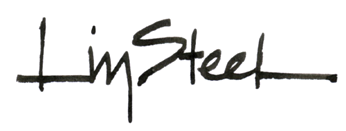
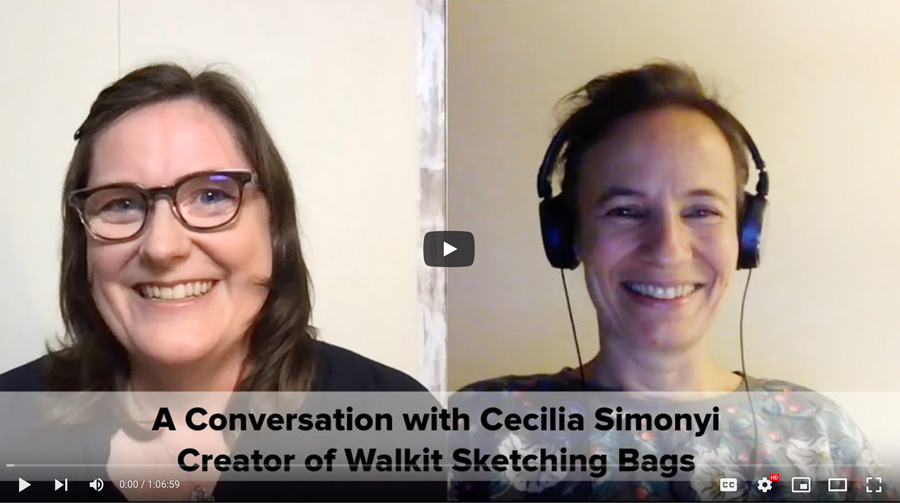
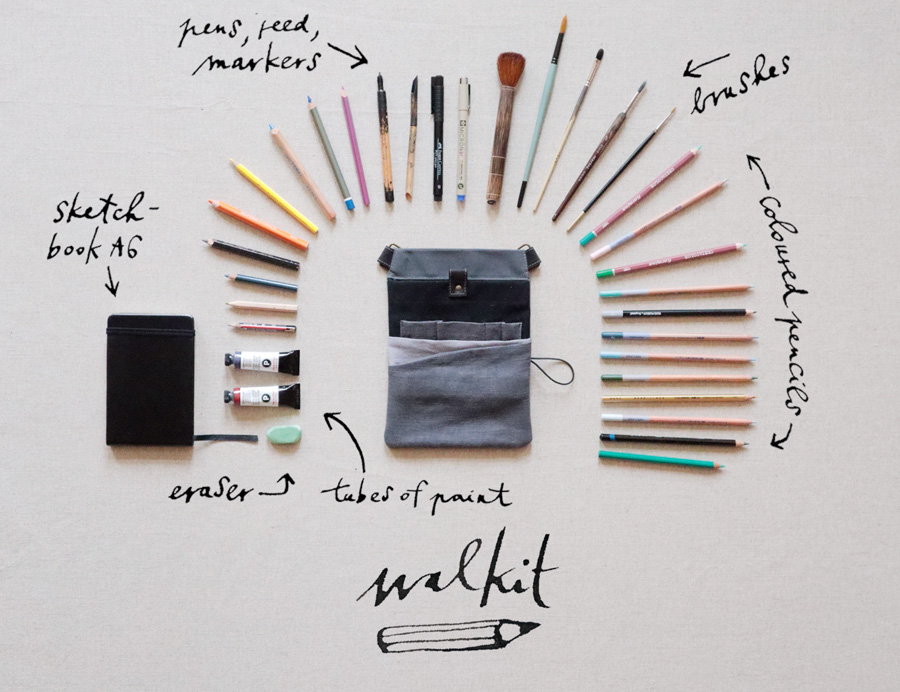



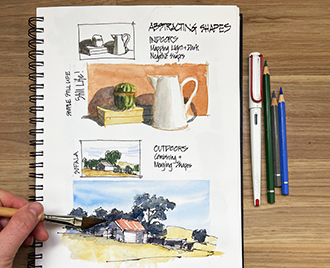

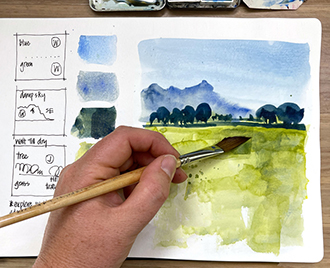
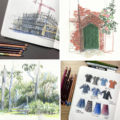
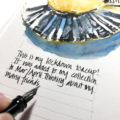

9 Comments
Wow…as a total non-business reader, I found it fascinating to read about all the different things that go into building and keeping a business. I had no idea. Thanks for sharing! It gives me a new appreciation for some of the small businesses I buy art supplies from.
Thanks Janice – I’m glad you enjoyed it!
Thank you, dear Janice, for sharing this. I am glad it gave you a new angle…
Thanks for sharing! A number of people keep telling me I should start selling some of my work, and this story helps bring the challenges and rewards of such a possibility into focus. I know what this means in terms of my day job where I help run a large architectural firm, but the nature and intensity of the “work” changes when it is just your own little operation! (See, I don’t even HAVE my own website to fill in the box below!)
Hi Charles – Ha! I know that type of advice so well. It’s easy to say ‘ you should sell these’ but the business side of things are really important. Very rewarding and satisfying, but it is a process. I also know what it’s like to have the demands of an architectural firm as well 🙂
Hi, Charles, I am happy if my story helped you to see the reality of this option! I would be curious what is your work, and encourage you to go on this adventure – it is challenging, but rewarding as well! When can I see your website? 🙂 Good luck!
What a great article! This communicates so well the steps of putting together a business and the importance of each of those steps, phases, and skills!
Thanks Jamie – yes, It’s so amazing to see all the details of Cecilia’s step, isn’t it?
Thank you, Jamie! I am so happy to hear this! I wasn’t sure I could structure all the information well enough…
NEWSLETTER
Subscribe for first notification of workshop + online classes and more.